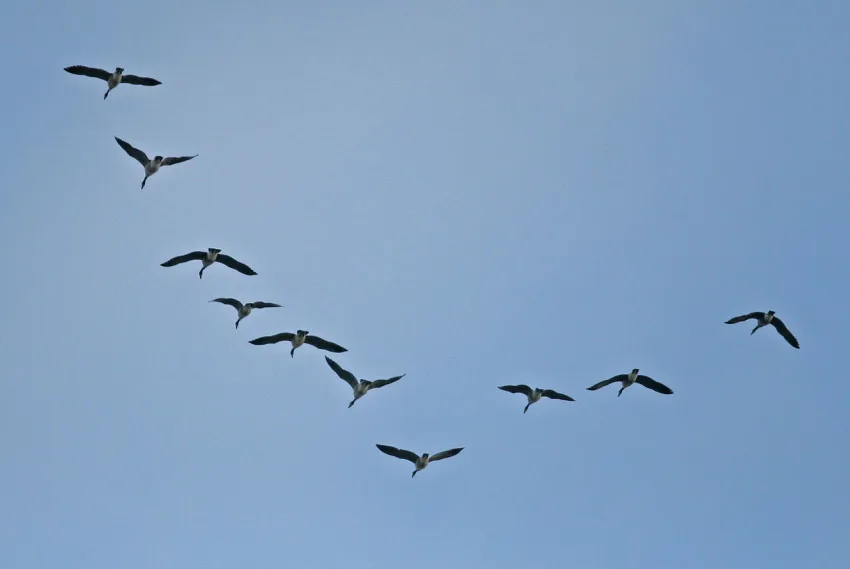
This is why geese fly in the shape of a ‘V’
A recent video showing over half a million snow geese descending on a Missouri lake reminds us that migratory birds are constantly travelling thousands of kilometres throughout the seasons.
Migrating geese are a sign of the changing seasons in North America and these animals are often spotted travelling in the shape of a ‘V.’ Many know that geese fly south in the winter when it becomes too cold, but it is not just the dropping temperatures that prompt these birds to travel south.
Dr. Elizabeth Gow, a postdoctoral fellow at the University of Guelph, says that seeking warmer weather is essential for survival, but it also leads to more food sources and often requires travelling to destinations that are thousands of kilometres away.
The video above shows the incredible scene of half a million snow geese gathering at the Loess Bluffs National Wildlife Refuge in northern Missouri as they migrate between Canada and Mexico.
SEE ALSO: Vomiting vultures invade $700K Florida vacation home
Snow geese typically arrive in Canada in April then travel to northern Canada to breed in June and July. They then migrate over 3,000 kilometres south to the United States in November and December where they can congregate in marshes, farm fields and sand bars during the winter months to find their preferred food sources. Snow geese are mainly vegetarians and eat a wide variety of plants and vegetables such as seeds, leaves, roots and aquatic plants.

Snow geese in Alexandria, Ontario. Credit: D. Gordon E. Robertson/ Wikimedia Commons. CC BY-SA 3.0
Seeing a flock of birds flying in a V-shaped formation is a stunning sight and Gow says that the human equivalent of this strategy is a group of people in a marathon running together. Flying in this formation helps pull the other birds along by reducing wind drag, which lowers the amount of energy they spend while flying. The leading goose has to exert the greatest amount of energy, but the effort pays off because the birds all take turns being the leader.
“Snow geese often congregate in large flocks of thousands of birds or more during winter and on migration, especially [on] the Prairies. Sometimes these large flocks look chaotic, but often within these massive flocks there are several little V-shaped formations or straight lines,” Gow explains.
Gow says that many snow geese can have lifespans longer than 15 years, which means that one of these birds can fly over 150,000 km or about four times around the circumference of the Earth.











